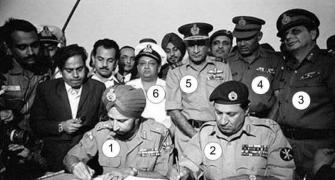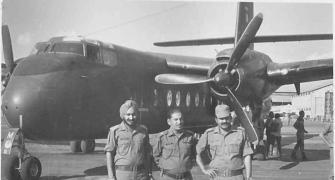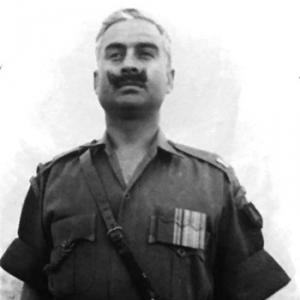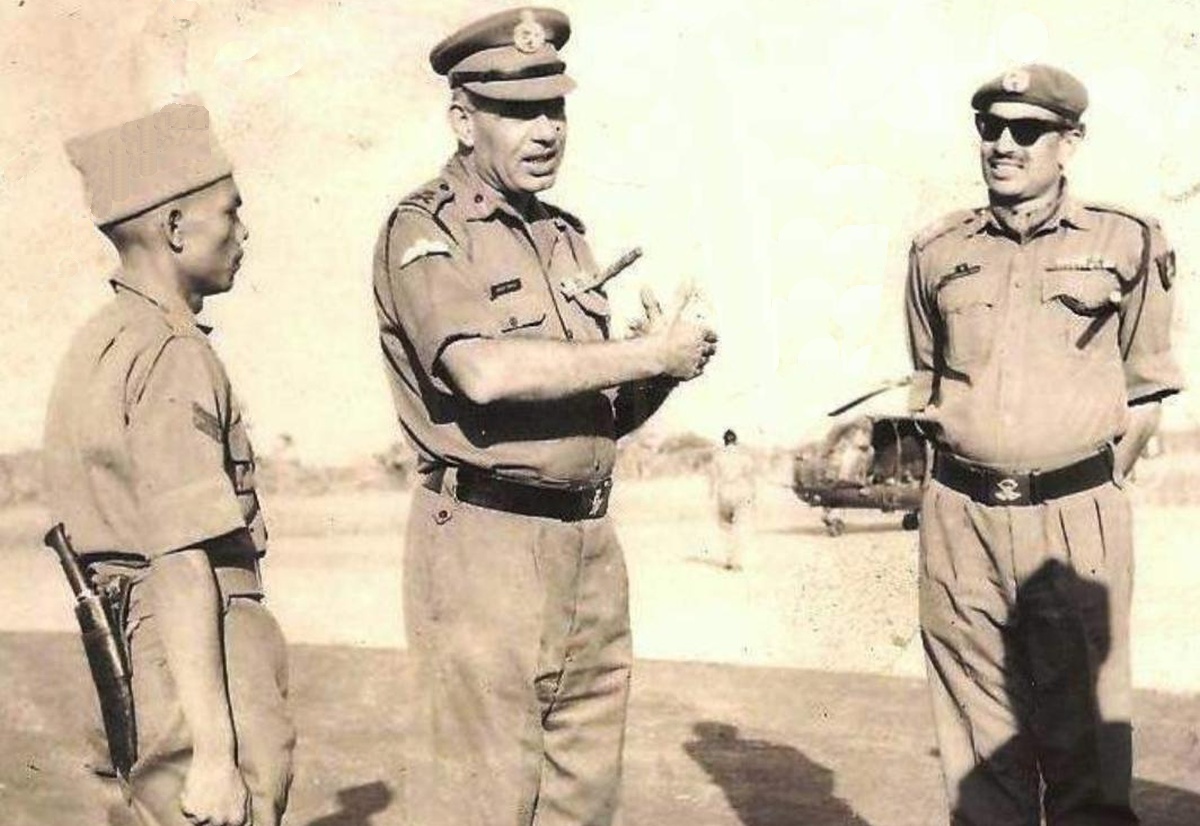'We are ready to surrender,' Lieutenant General A A K Niazi said over the phone from Dhaka.

Major General Gandharv S Nagra and Lieutenant General A A K Niazi were in college together before Partition.
General Nagra told General Niazi over the phone, 'Abdullah, this is Gandharv here' and General Niazi asked, 'Gandharv where are you?'
He said, 'I am at the gate of Dhaka and waiting for you to surrender'.
General Niazi answered, 'We are ready.'
Lieutenant General Kuldip Singh Brar (retired) is one of India's most celebrated military commanders. He was awarded a Vir Chakra for his gallantry in the 1971 War.
Then a lieutenant colonel, he was among the first Indian soldiers to enter Dhaka after his battalion decimated the Pakistani army in the decisive Battle of Jamalpur.
Now 88, he remembers the names of fellow soldiers he led into battle along with every minute detail of their march to Dhaka.
"The time for surrender was fixed at 4.32 pm at the Dhaka racecourse. Is it amazing that I was able to live and take part in this great historical moment?" the general tells Rediff.com's Archana Masih in the second part of a riveting interview.
You led the 1 Maratha Light Infantry in the 1971 War and received a Vir Chakra; your unit was awarded 8 gallantry medals.
In an account of the battle, Lieutenant General Satish Nambiar, a major then, remembers you as the dashing commanding officer leading troops -- what are the memories that have remained with you of that decisive battle?
Major Nambiar, a brilliant officer, was one of my company commanders in the war. I've seen very few officers of his calibre in the Indian Army. He was on the front line and received a Vir Chakra for this action. He fought very bravely.
After we captured Jamalpur, the Brigade Commander and the General Officer Commanding arrived in helicopters. They told us to move to Tangail between Jamalpur and Dhaka because the Second Para Regiment was going to carry out a para drop to capture the Tangail bridge [in then East Pakistan].
The Paras had no tanks or artillery and would be vulnerable as they came down in their parachutes. The Pakistani army could move from Dhaka and destroy them.
Therefore, we were told to link up with the paratroopers so that together we could be a formidable force. However, my battalion had no transport as we had come on foot.
So my officers and men went into Jamalpur town to collect vehicles. We got fire engines, trucks, buses, tempos, motorcycles, jeeps. We mustered as many vehicles as we could. Many had tire bursts because of the air strikes, but we quickly repaired them and had enough vehicles to move the whole battalion.
It was a sight to watch because we were not moving in a conventional military convoy of trucks and tanks but in buses, tempos, fire engines, and anything that could move!
We got into Tangail and linked up with 2 Para regiment whose troops were also Marathas like us.
When both the battalions met, you could just hear 'Bolo Chhatrapati Shivaji Maharaj ki jai' and everyone was embracing each other.
We were congratulating them for the successful air drop and they were congratulating us for having linked up with them.
Thereafter, the news went into Dhaka that the Indian Army has landed a para brigade. The Pakistan army feared that the Indian Army was converging on Dhaka.
We carried on towards Dhaka with whatever vehicles, trucks etc, we could muster. We could find stragglers of the Pakistani army, who had escaped from Jamalpur, Mymensingh and other garrisons and were trying to reach Dhaka.
We captured them, put them into our trucks and took them along. By December 13, we were at the outskirts near a bridge which led on to Dhaka. We could see the buildings through our binoculars.
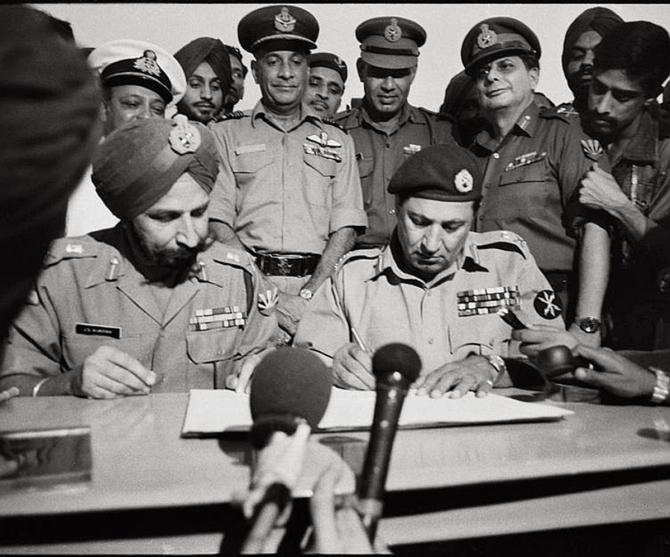
Among the Indian military officers present: Eastern Army Commander Lieutenant General Jagjit Singh Aurora, Major General J F R 'Jake' Jacob, Chief of Staff, Eastern Command, Lieutenant General Sagat Singh, General Officer Commanding 4 Corps and the general who 'liberated' Bangladesh, Air Marshal Hari Chand 'Harry' Dewan, Commander in Chief, Eastern Air Command, Vice Admiral Nilkanta Krishnan, Flag Officer Commanding-in-Chief, Eastern Naval Command. Photograph: DPR Photo Division Archives
This was on December 13, please bear in mind that the surrender took place on December 16. So we were there three days earlier.
We were not in communication with any army authorities in India -- not Shillong or Delhi or Calcutta. Our only news was from All India Radio. We could hear army chief General, later Field Marshal, Sam Manekshaw appealing to the Pakistanis to surrender.
He was telling them that they could not escape as they were surrounded on all sides. He promised that the Indian Army would treat them under the Geneva Convention.
We could hear this on All India Radio, but we were not in communication with our senior formations. We did not know what to do. We waited because General Manekshaw said he would give the Pakistan army 24 hours to surrender. He said if they did not surrender, India would continue with the airstrikes.
So the airstrikes continued. On 16th morning, my brigade commander Brigadier H S Kler and General Officer Commanding Major General G S Nagra decided to send some troops to the bridge and see if there were any Pakistanis there.
When we went to the bridge, we discovered that it was deserted. The Pakistani soldiers had run away to Dhaka.
There was an army telephone on the bridge. Brigadier Kler, who was from the Corps of Signals and a very brave officer, had to crank the handle of the phone to talk and someone answered at the other end, 'Headquarter Eastern Command' which was in Dhaka.
Brigadier Kler said, 'I want to speak to General Niazi'. The person at the end of the line said, 'Who are you?' He said, 'I am a brigadier from the Indian Army and we are outside Dhaka. We have heard all the appeals from our army chief for you to surrender and I would like to talk to General Niazi'.
Our GOC Major General Gandharv Nagra and General Niazi were in college together before Partition and were old friends.
So General Nagra took over the phone while General Niazi was on the other side.
He said, 'Abdullah, this is Gandharv here' and General Niazi asked, 'Gandharv, where are you?'
He said, 'I am at the gate of Dhaka and waiting for you to surrender'.
General Niazi said, 'We are ready to surrender, but we don't know who to tell'.
General Nagra said, 'We are here'.
General Niazi said, 'I'm sending a few cars, you come into Dhaka and we'll work out the surrender terms.'
We then went into Dhaka in Pakistani vehicles and saw the hospital, university, airfield en route.
We arrived at the HQ, Pakistan Eastern Command. General Niazi came out and embraced General Nagra.
They went into the office to talk. Meanwhile, we informed Calcutta that we were in Dhaka, and the Pakistan army was ready to surrender.
Major General J F R Jacob [chief of staff, eastern Command, Indian Army] flew down in an IAF plane. Lieutenant General Jagjit Singh Aurora [general officer commanding-in-chief, Eastern Command, Indian Army], stayed in Calcutta.
General Jacob arrived in Dhaka and worked out the surrender formalities with General Niazi.
The time for surrender was fixed at 4.32 pm at the Dhaka racecourse. This was a historical moment. Is it amazing that I was able to live and take part in these great moments of military history?
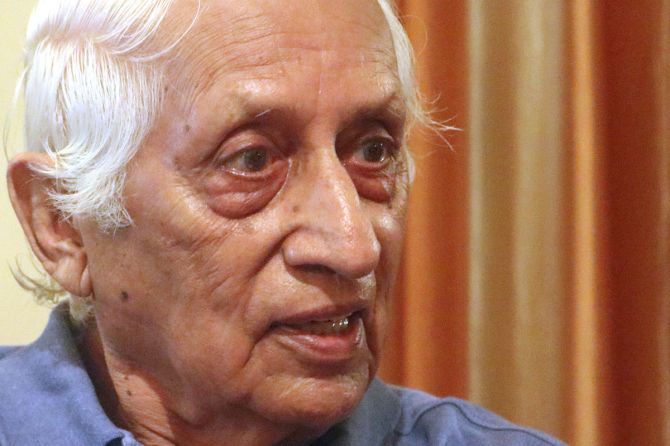
Then, of course, 93,000 Pakistanis surrendered as prisoners of war to the Indian Army.
Another coincidence was that I was asked to look after some of these prisoners of war. I had them lined up and I was walking past them.
I asked them their names and if they had any problems. They all looked up and shook hands. I told them they would be treated as per the Geneva Convention and would soon be returned home, etc.
When I came to a particular officer, he was looking down. I asked him to look up and it was Colonel Akbar who was with me at the Australian Army Staff College in 1964.
We had done the staff college in Australia together and now, he was a prisoner of war.
I took him aside and asked about the wellbeing of his wife Tasleem. He said she was in Lahore.
I said, 'I'd like to talk to her'.
We went outside and I spoke to her.
I said, 'I'm Bulbul Brar'.
She said, 'Salaam aleikum. How are you? Nice to hear your voice again.'
I replied, 'Akbar is with me. He's safe. He's fit and very soon he'll be with you. Rest assured.'
She said, 'Khuda hafiz, may god look after you'.
I also said, 'Akbar and I are going to have kababs and parathas this evening together.'
He was a prisoner of war, but as far as I was concerned, he was a comrade in arms. He was wearing a khaki uniform; I was wearing an olive green uniform whom destiny had put on opposite sides to fight each other.
This is what war is.
When a decision is taken to go to war, you have to fight the enemy.
When I went into the Golden Temple in Amritsar, it was not a war. There was no enemy. I told my soldiers and officers, 'Always remember, we are going to a place of worship. We are not going to battle. I wish we were going to fight Pakistan or China.'
I gave them the example of north east India, where we had to fight the insurgents -- Assamese, Naga, Mizo rebels. They were our own people, fellow Indians, not the enemy. We had to use minimum force and bring law and order.
Similarly, in the Golden Temple, I told my men that we were not going against an enemy, but against misinformed people who had chosen the wrong track and wanted to secede from India. They wanted to break up India and create their own state.
These are the parallels I can draw between the north east and the operation in the Golden Temple.
Feature Presentation: Aslam Hunani/Rediff.com


